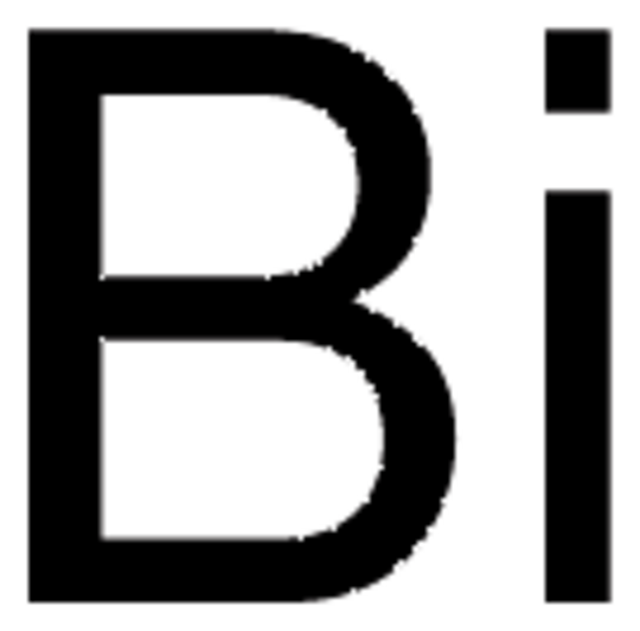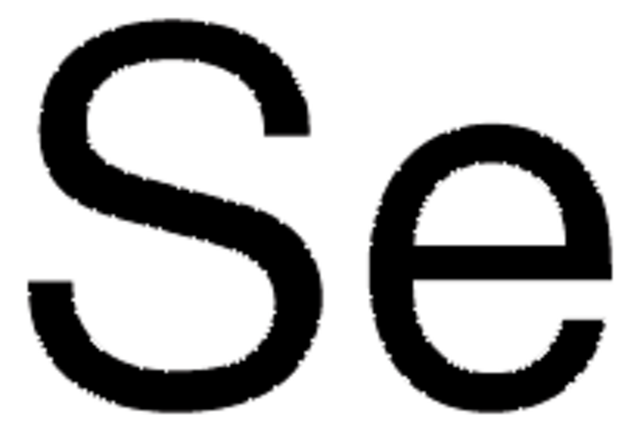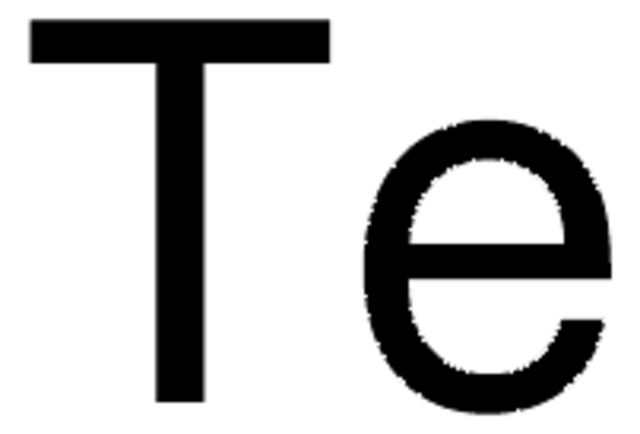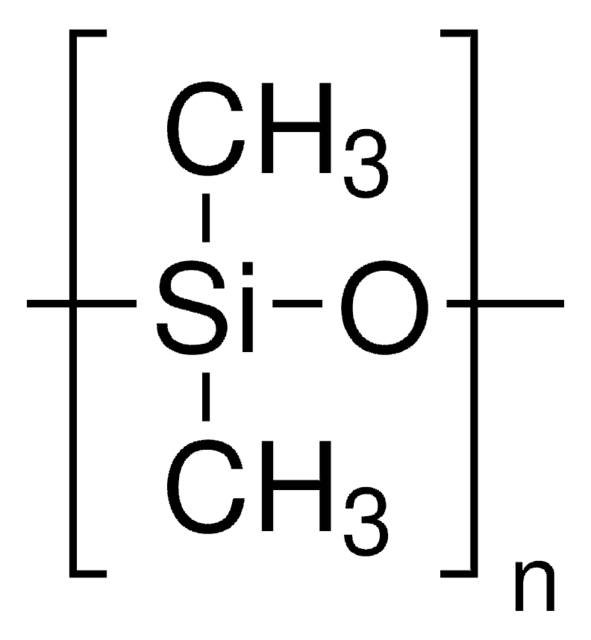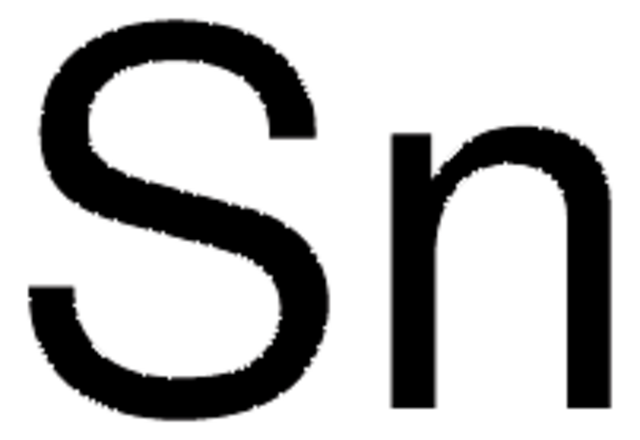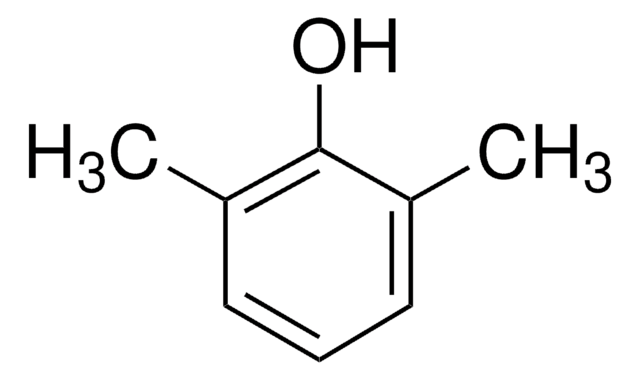556130
Bismuth
pieces, 1-12 mm, 99.999% trace metals basis
Synonyme(s) :
Bismuth element, Bismuth-209
About This Item
Produits recommandés
Pression de vapeur
<0.1 mmHg ( 20 °C)
Essai
99.999% trace metals basis
Forme
pieces
Résistivité
129 μΩ-cm, 20°C
Taille des particules
1-12 mm
pb
1560 °C (lit.)
Pf
271 °C (lit.)
Densité
9.8 g/mL at 25 °C (lit.)
Chaîne SMILES
[Bi]
InChI
1S/Bi
Clé InChI
JCXGWMGPZLAOME-UHFFFAOYSA-N
Vous recherchez des produits similaires ? Visite Guide de comparaison des produits
Catégories apparentées
Description générale
Application
- Research Update: Bismuth based materials for photovoltaics: This research update briefly summarizes the developments in bismuth materials for use in photovoltaics, focusing on bismuth-based perovskites and bismuth halides (Cates & Bernechea, 2018).
- Bismuth-based photocatalysts for solar energy conversion: This study reviews bismuth-based photocatalysts, which are gaining attention for their efficiency in solar energy conversion (Wang, Wang & Huang, 2020).
Code de la classe de stockage
11 - Combustible Solids
Classe de danger pour l'eau (WGK)
nwg
Point d'éclair (°F)
Not applicable
Point d'éclair (°C)
Not applicable
Équipement de protection individuelle
Eyeshields, Gloves, type N95 (US)
Faites votre choix parmi les versions les plus récentes :
Déjà en possession de ce produit ?
Retrouvez la documentation relative aux produits que vous avez récemment achetés dans la Bibliothèque de documents.
Les clients ont également consulté
Articles
The unique properties of the rare-earth elements and their alloys have brought them from relative obscurity to high profile use in common hightech applications.
Global Trade Item Number
| Référence | GTIN |
|---|---|
| 556130-250G | 4061832582658 |
Notre équipe de scientifiques dispose d'une expérience dans tous les secteurs de la recherche, notamment en sciences de la vie, science des matériaux, synthèse chimique, chromatographie, analyse et dans de nombreux autres domaines..
Contacter notre Service technique